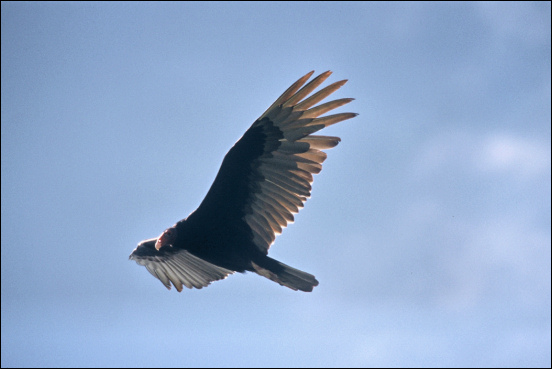

People have been amazed from time immemorial at the seemingly effortless soaring of birds, wings outstretched and nearly immobile. People eventually came to realize, of course, that these birds were riding rising currents of air. In the desert Southwest, the morning sun quickly heats the ground and the ground in turn, warms the air above it. Soon, columns of expanding air rise, and hawks and vultures ride the wind. The circling flight, necessary to remain in the rising current is a dead giveaway to knowledgeable desert dwellers.
Hot air is not the only way to soar, however. You may spot a bird
virtually stationary in mid air, as if nailed to an invisible post. If you're
observant, you'll see a ridge to the windward. As the wind is forced to rise over
the obstruction, its momentum may cause it to continue upwards for some distance before
sinking back down. Judicious positioning in this rising current is every bit as
effective as heated air. Of course if you get out of position, you end up as a soar
loser.

Contributor: Arthur H. Harris, Laboratory for Environmental Biology, Centennial Museum, University of Texas at El Paso.
Desert Diary is a joint production of the Centennial Museum and KTEP National Public Radio at the University of Texas at El Paso.

Soaring Turkey Vulture. Photograph by Lee Karney, courtesy of the U.S. Fish and Wildlife Service.